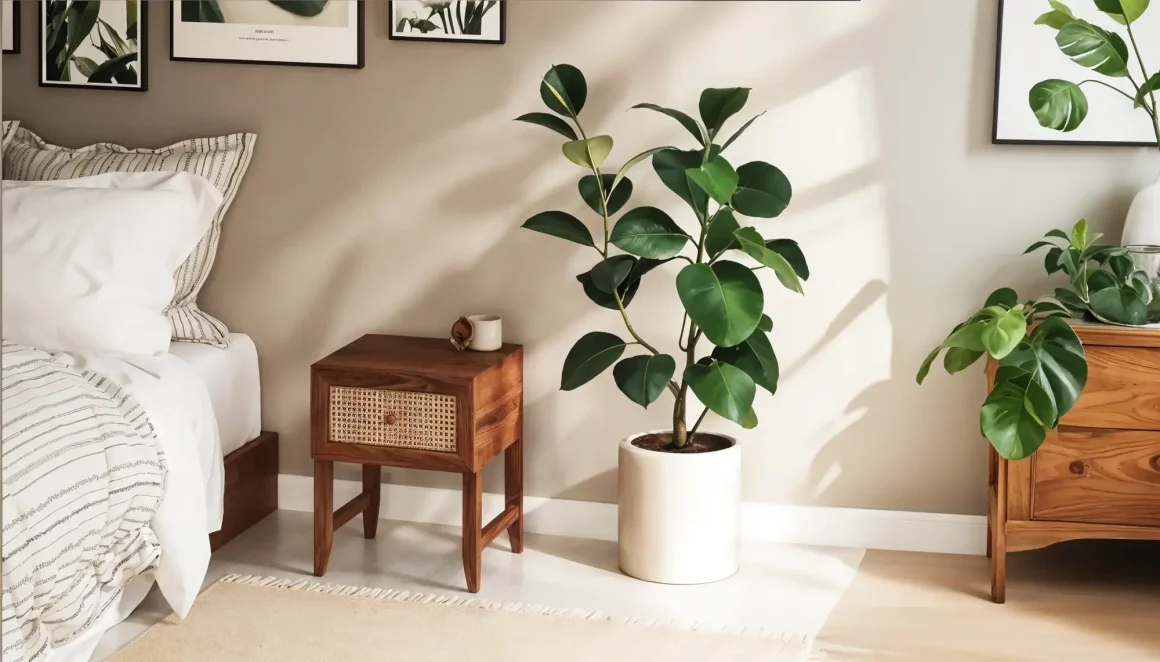If you’re a fan of Japandi design and want to bring a bit of nature into your home, then Japandi plants are the perfect choice. Your space already has that calm, minimalist vibe, but something is missing. Maybe your room feels too bare, or the clean lines and neutral tones could use a pop of life. That’s where Japandi-style plants come in.
We’ll walk you through some of the best Japandi indoor plants and even explore a few faux options if you’re not too confident with plant care. Whether you’re a seasoned plant parent or just getting started, these plants are easy to care for and will fit right in with your Japandi-inspired interior.
So, if you’re ready to give your home that calm, nature-filled touch, let’s discover the best Japandi plants for your space!
12 Japandi Plant Ideas to Create a Balanced, Nature-Inspired Home
If you’re looking to bring a little more peace, balance, and nature into your home, these Japandi house plants are the perfect place to start. They’re simple, beautiful, and just what your space needs to feel calm and complete.
1. Ficus Benjamina
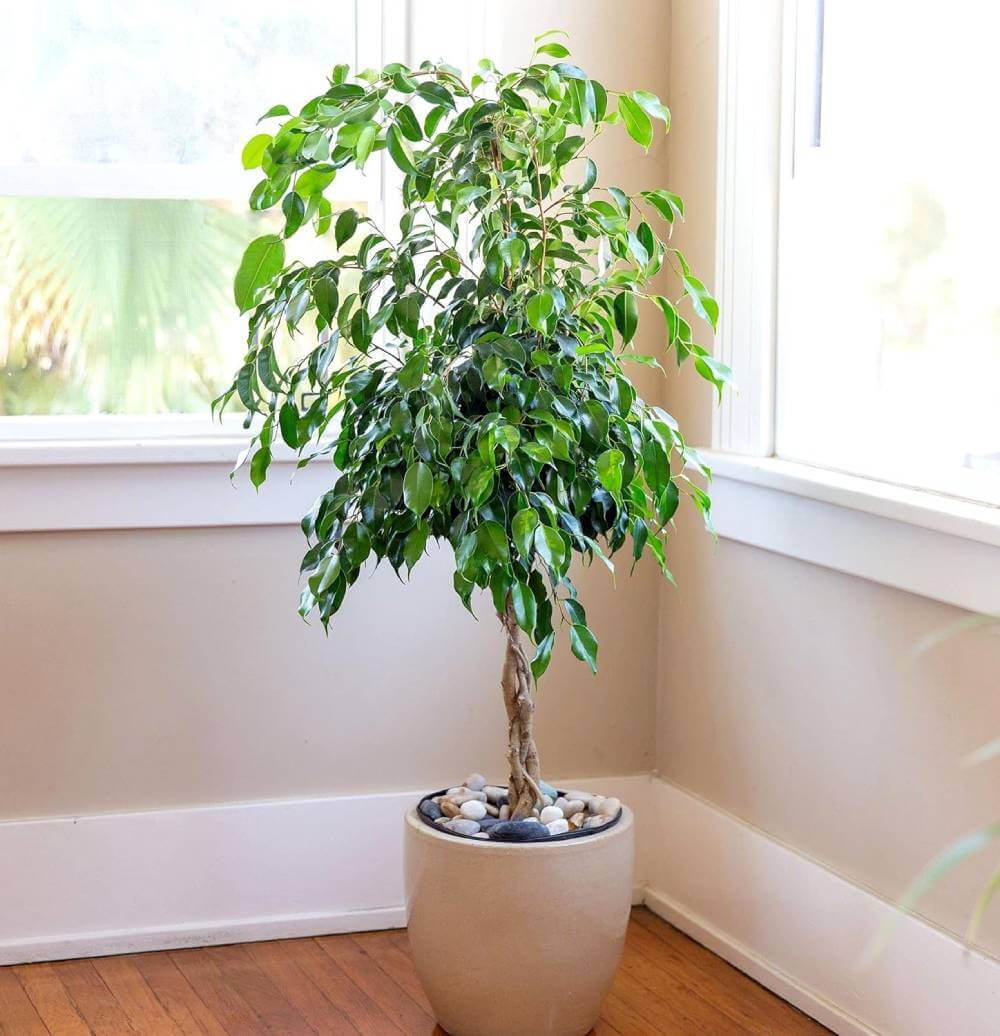
Also known as the weeping fig, Ficus Benjamina has a graceful structure and glossy green leaves that feel right at home in any Japandi-style space. With its soft drooping leaves and elegant branches, it brings a sense of movement and calm that fits right into a Japandi-style interior. Whether you place it by a window or in a cozy corner, this Japandi houseplant instantly adds life without breaking the clean, minimalist vibe.
2. Fiddle Leaf Fig
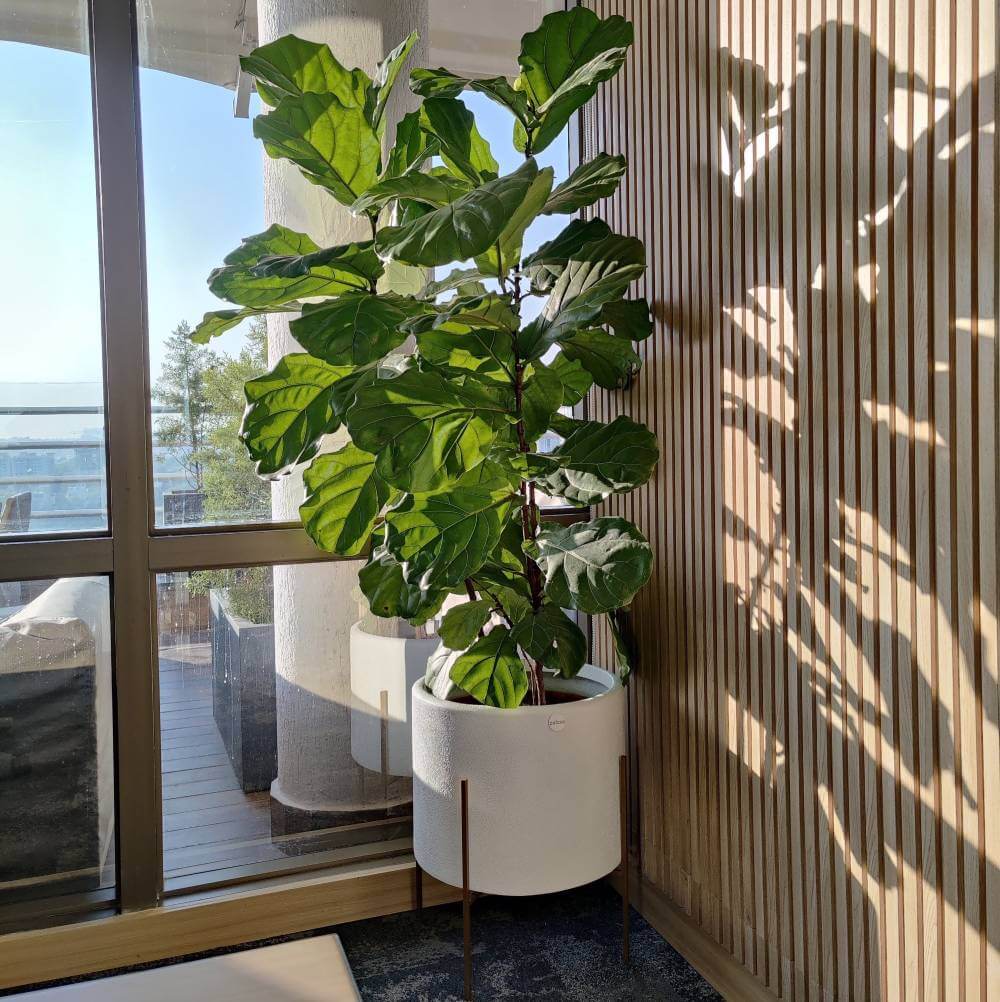
The Fiddle Leaf Fig isn’t just popular for no reason. Its tall structure and oversized leaves make it the perfect Japandi indoor tree when you want something bold but not overwhelming. It has a sculptural look, neutral Japandi furniture, and natural wood tones. Pop it in a simple Japandi planter and place it in your living room or workspace to create that striking yet soothing focal point.
3. False Aralia
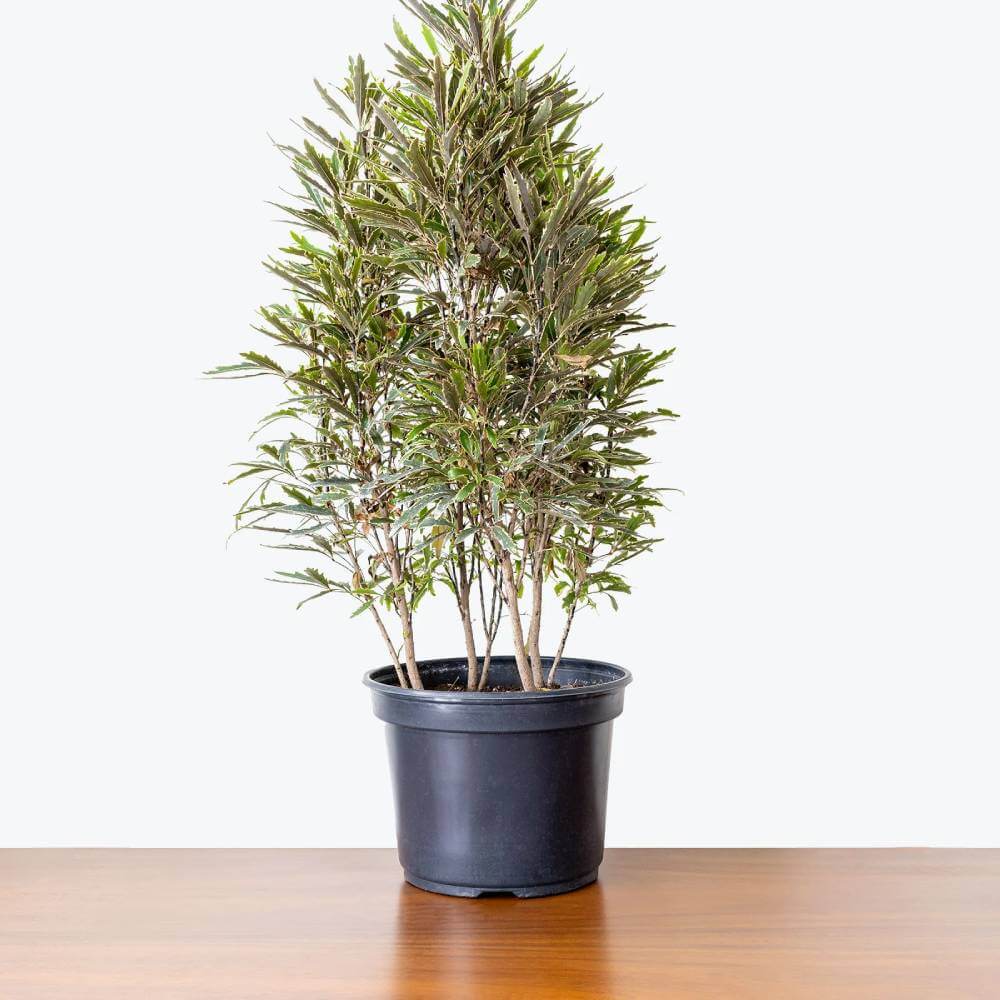
If you want something a little different, False Aralia is a great pick. Its slender, jagged leaves look delicate and sculptural, almost like a piece of living art. It has that subtle Japanese beauty while still keeping a Scandinavian simplicity. This plant doesn’t use much space, so it’s perfect for small apartments or quiet nooks in your home. Just tuck it into a light-toned Japandi plant stand, then you’re good to go.
4. Cast Iron Plant
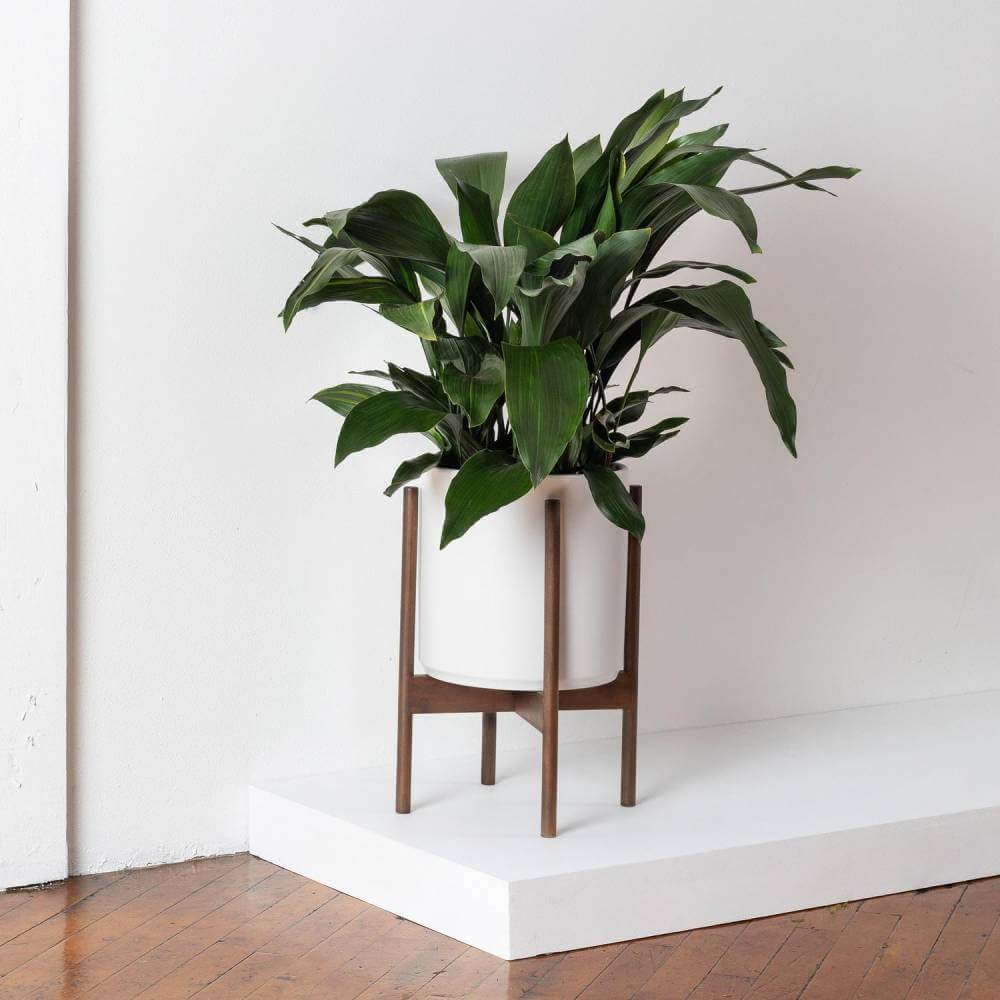
If you’re looking for a truly low-maintenance plant to complement your Japandi aesthetic, the Cast Iron Plant is an ideal choice. This plant thrives in low light and needs very little attention, making it perfect for those of us who love the idea of greenery but don’t have the time to fuss over it. It’s a beautiful background plant that complements any Japandi color palette. If you’re new to Japandi house plants, this one is a good place to start.
5. Snake Plant
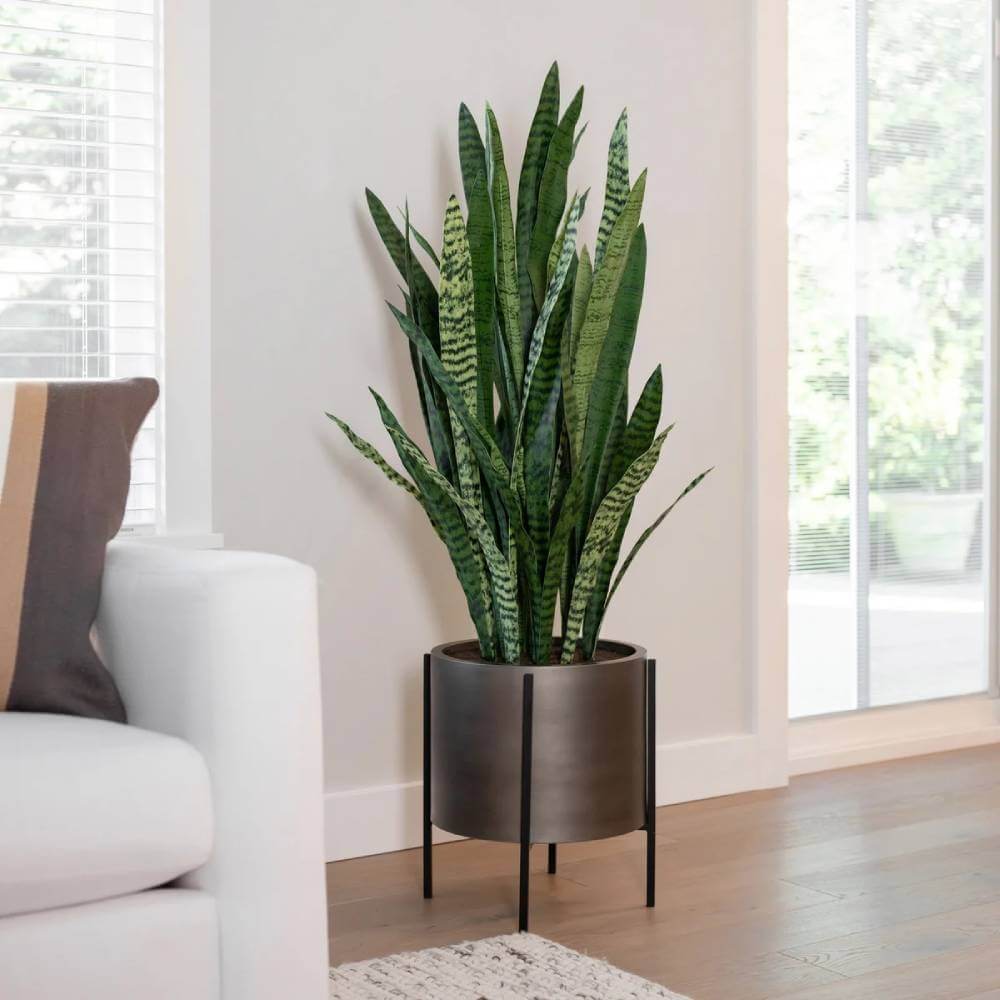
Also known as Mother-in-law’s Tongue, the Snake Plant is one of the most versatile Japandi indoor plants. It grows upright with sharp, clean lines, which is an ideal match for the sleek, uncluttered look of Japandi style. It’s also perfect for bedrooms or entryways where you want a touch of greenery without too much visual noise. Position it in a light-toned ceramic Japandi plant pot or a minimalist black planter, and let it quietly do its thing.
6. Monstera Deliciosa
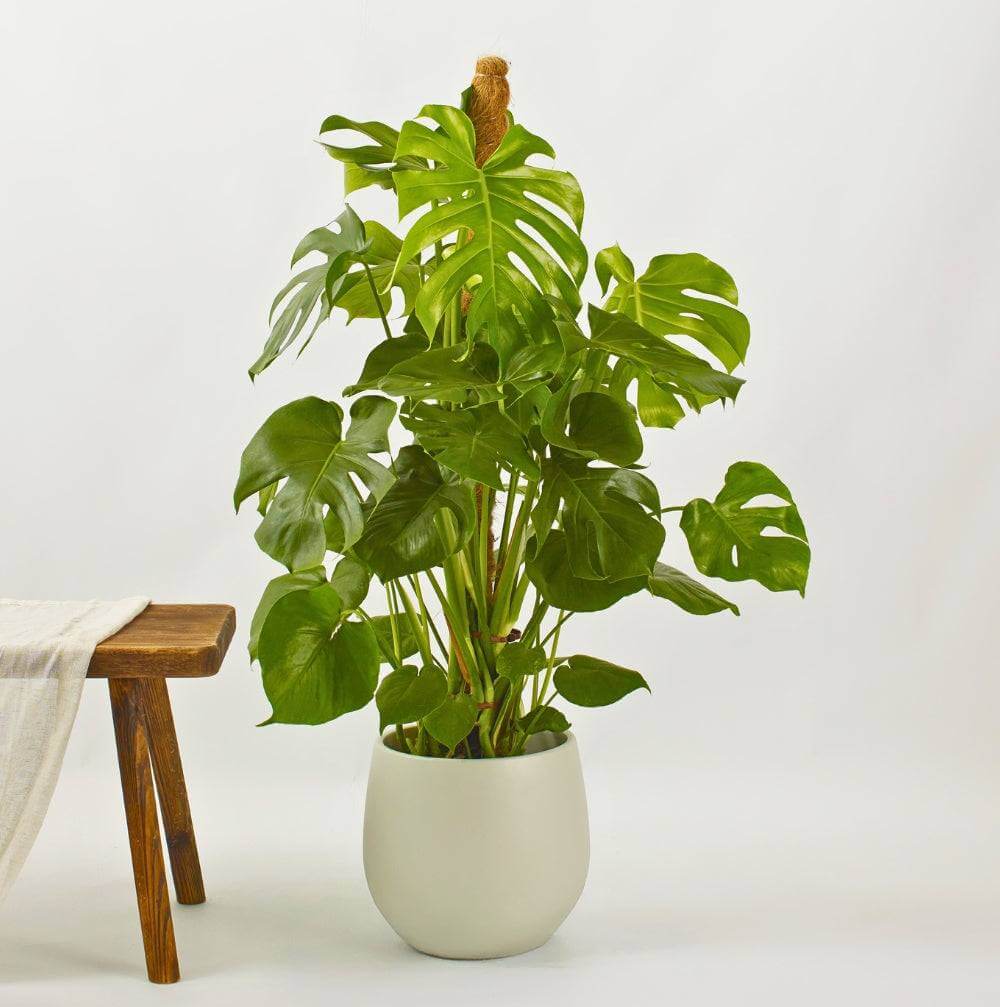
Monstera might not be native to Japan or Scandinavia, but it has a bold tropical vibe that fits the Japandi style’s love for clean, organic forms. The large, split leaves add movement and shape without looking too busy. It’s perfect if you want a focal point without breaking the calm, clean look of your space. A well-placed Monstera in a Japandi planter instantly makes your home feel more balanced and connected to nature, especially when set against a neutral or earthy palette.
7. ZZ Plant

The ZZ Plant is practically made for minimalist living. This plant thrives on neglect, grows slowly, and keeps its glossy, dark green leaves looking fresh all year round. Its tidy structure fits perfectly into a Japandi-style corner, especially with wooden shelves or soft-toned planters. If your lifestyle is busy but you still want that plant energy, this is your go-to.
8. Japanese Maple
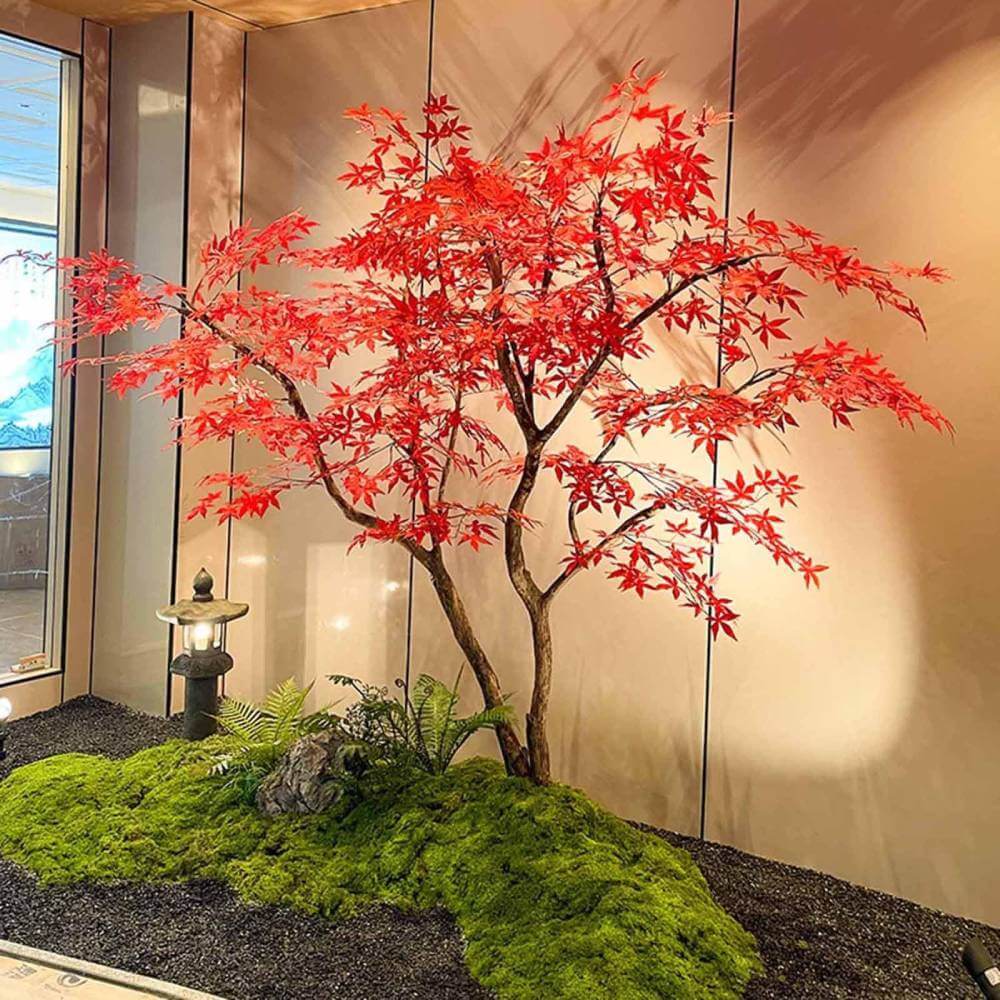
While typically grown outdoors, smaller varieties of Japanese Maple can be kept indoors in bright spaces. If you’re looking for a Japandi tree that makes a statement while still feeling delicate and peaceful, this is it. Their delicate leaves and seasonal color shifts add quiet drama to your decor. This Japandi outdoor plant is perfect for a reading nook or even a home office, where it becomes a living art piece. Use a traditional Japanese flower pot or minimalist ceramic planter to complete the look.
9. Peace Lily
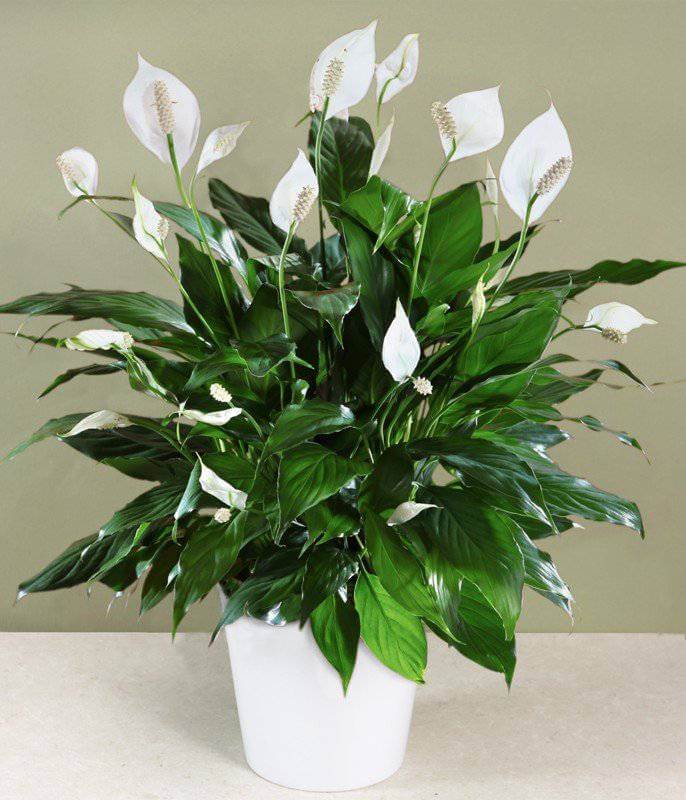
There’s something so peaceful about a blooming Peace Lily. Its broad, lush leaves and delicate white flowers create a gentle beauty that complements Japandi aesthetics. It’s one of those indoor Japandi plants that adds greenery and grace to any room. Plus, it’s great at purifying the air, which adds to the calming atmosphere. Whether placed in your bedroom or living area, this Japandi flower gives off a sense of calm and freshness that helps your home feel more like a sanctuary.
10. Succulent
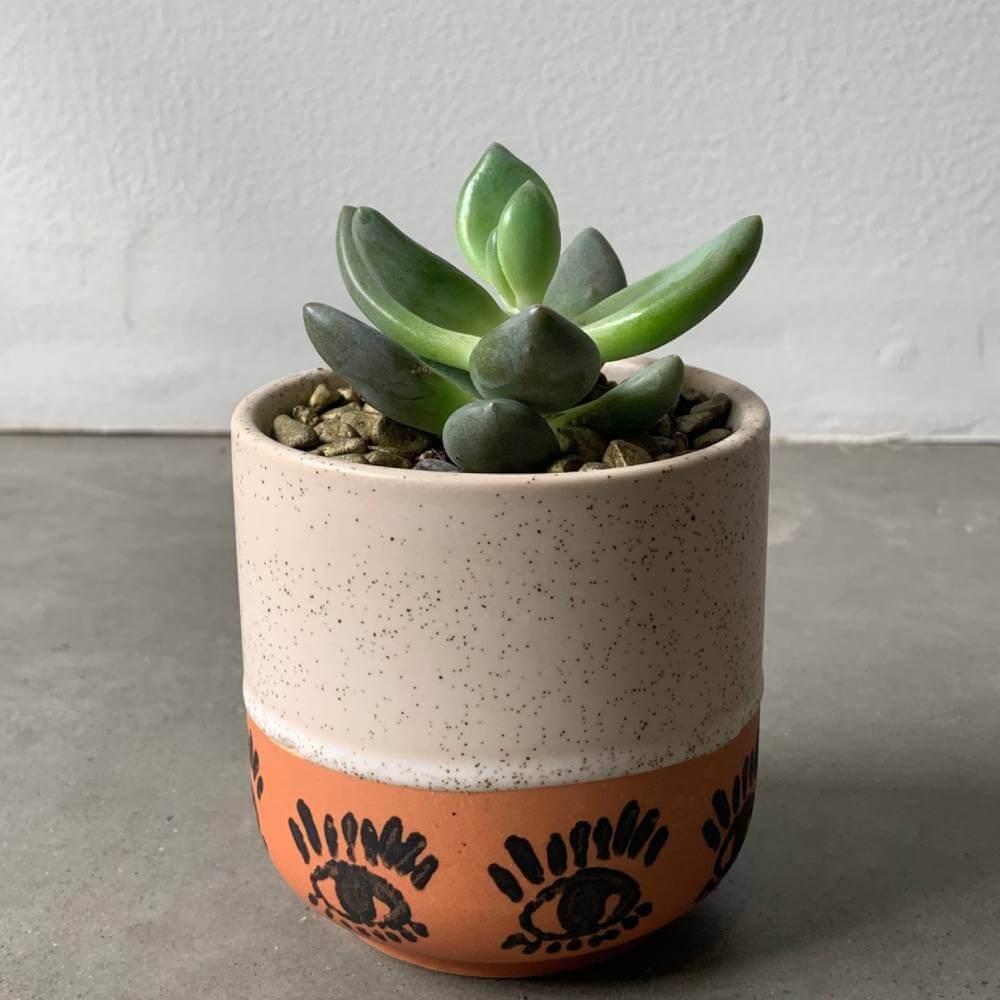
Succulents might be small but impactful when grouped in a Japandi plant arrangement. While they’re not originally from Japan or Scandinavia, their simple, clean shapes fit perfectly with the minimalist vibe. These plants come in all sizes and varieties, making them easy to place in any space. Whether you choose a small succulent on your desk or a bigger one for a statement piece, they add a touch of greenery without taking up too much room or attention.
11. Dwarf Olive Tree
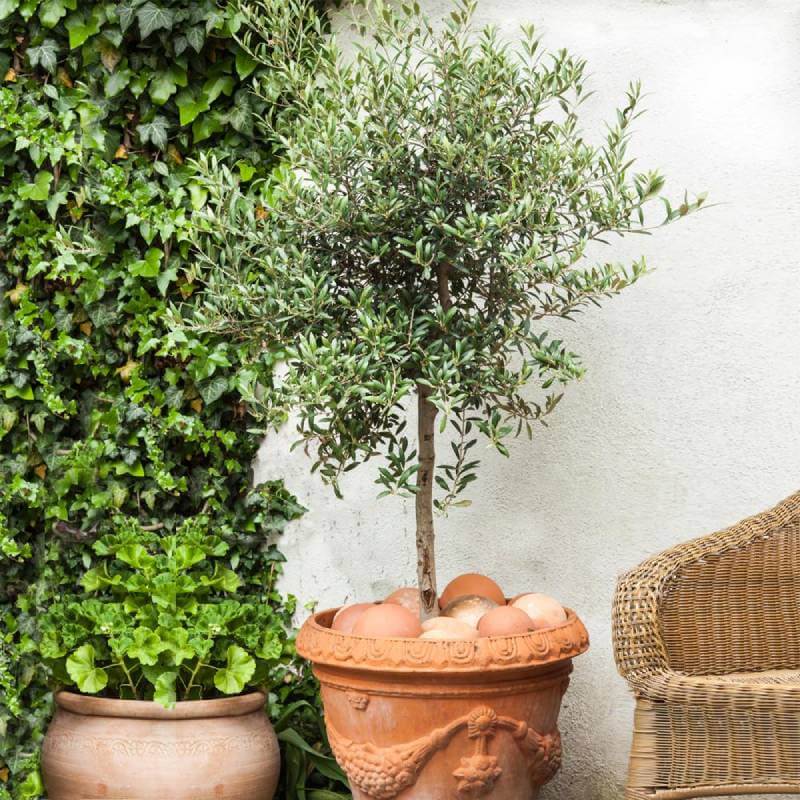
The Dwarf Olive Tree brings a Mediterranean touch to your Japandi plant decor, and somehow, it just works. Its silvery-green leaves pair beautifully with light wood furniture and soft textiles. This plant adds a touch of elegance while still feeling down-to-earth. Position it in a Japandi plant stand or a textured planter to let it shine in your space. Bonus: it’s perfect for both Japandi indoor and outdoor plant setups.
12. Faux Bonsai Tree
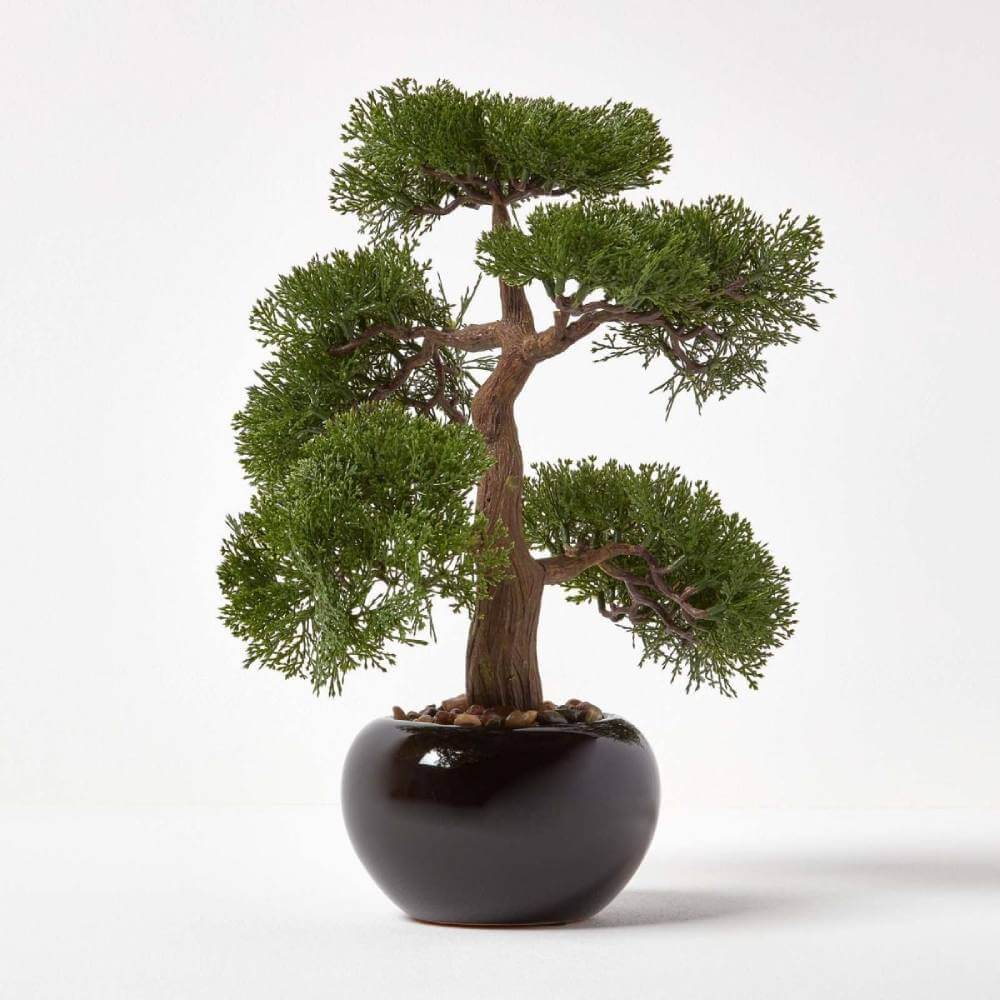
Not all Japanese plants have to be actual plants. Bonsai trees are known for their calm and balanced look, and a faux one gives you that same beauty without much care. The small, detailed branches and leaves look just like the real thing, but with no watering or trimming required. You can place this Japandi faux plant on a shelf or table to create a simple, serene vibe in your home.
How to Style Japandi Plants in Your Home
So, you’ve picked out your Japandi plants. Now comes the fun part: styling them. Whether you’re working with a spacious living room or a small corner in your bedroom, here are some easy and beautiful ways to style Japandi plants in your home:
Let One Plant Be the Star
Japandi design is all about “less but better.” Instead of crowding your space with too many plants, choose a few that make a statement. One large plant in a neutral pot can be more powerful than a dozen small ones scattered everywhere.
Mix Textures, Not Colors
To keep that earthy, grounded look, place your plants in pots made from clay, stone, rattan, or unfinished wood. These natural textures work beautifully with greenery and blend into the Japandi palette.
Use Plants to Warm Up Minimal Spaces
Do you have a corner that feels a little too empty or “cold”? A simple potted Japandi plant can make all the difference. Whether on the floor, on a low wooden bench, or hanging from the ceiling in a macrame holder, it adds just enough life without feeling busy.
Play with Height and Layers
Mix things up by using plants of different heights. Imagine a tall olive tree beside a low, round coffee table, a hanging plant gently cascading over a shelf, Or a small bonsai on a wooden stool. Varying the height creates visual interest without making things feel cluttered.
Stick to Natural, Neutral Tones
Keep your plant pots and stands within that neutral Japandi color range, like whites, soft grays, sandy beiges, and warm browns. This helps your greenery stand out without disrupting the overall harmony.
Read more: 10 Japandi Living Room Ideas for a Chic Minimalist Home.
Japandi Plant Care Tips
While Japandi house plants are generally low-maintenance, caring for them will ensure they thrive and add beauty to your home. Here are some quick tips:
1. Choose the Right Spot
Japandi plants love natural light, but direct sunlight can be too harsh for some, like the Peace Lily. Position them in bright but indirect sunlight to keep them healthy and happy.
2. Water Wisely
Over-watering is a common mistake. Most Japandi indoor plants, such as the Fiddle Leaf Fig or the Cast Iron Plant, prefer their soil to dry out between waterings. Always check the soil moisture before watering to avoid root rot.
3. Prune Regularly
To keep your plants healthy and well-shaped, regularly trim away any dead leaves or stems. This is especially important for fast-growing varieties like the Monstera or ZZ Plant, which can become unruly without occasional pruning.
4. Maintain Humidity
Some Japandi plants, especially the Peace Lily and Monstera, thrive in humid environments. If your home is dry, consider placing a small humidifier near your plants or misting them occasionally to keep them happy.
5. Repot When Needed
Over time, your plants may outgrow their current pots. When this happens, consider repotting them into a slightly larger Japandi plant pot to give them room to grow. The timing for repotting depends on the plant but is typically every 1-2 years.
6. Keep it Clean
While Japandi plants are generally low-maintenance, you still need to give them a little TLC. Dust can build up on their leaves and block the light they need. Gently wipe down the leaves with a soft cloth or sponge to keep them looking fresh. This small task will help your plants thrive and maintain their aesthetic appeal.
7. Rotate Regularly
To ensure your Japandi plants grow evenly, rotate them regularly. Plants naturally lean toward light, so rotating them helps them grow straight and healthy. This is especially important for plants like the Fiddle Leaf Fig, which tends to stretch toward the light.
8. Observe and Adjust
Lastly, be patient with your Japandi plants. Each one has its own needs and quirks, so pay attention to how it’s reacting to its environment. If a plant starts wilting, check its watering, light, and humidity levels. A little observation goes a long way in keeping your Japandi plants happy.
Real vs Faux Japandi Plants – Which Should You Choose?
When choosing Japandi plants, you have two options: real or faux. But how do you decide which is right for your home? Let’s take a look at the pros and cons of each:
Real Japandi Plants
Pros:
- Natural Air Purification: Real Japandi indoor plants, like the Snake Plant or ZZ Plant, help purify the air, making your space healthier and more breathable.
- Authenticity: There’s something special about the organic, authentic look of real plants. Their texture and vibrancy are hard to replicate.
- Connection to Nature: Having live plants in your space brings a sense of calm and connection to nature, which aligns perfectly with Japandi principles.
Cons:
- Maintenance: Real plants require regular care, watering, pruning, and occasional repotting. For those seeking a low-maintenance option, this level of upkeep may feel like a drawback.
- Light Requirements: Some plants, like the Monstera or Japanese Maple, need specific light conditions. If your space doesn’t offer the right light, you may need to work harder to ensure your plants thrive.
Faux Japandi Plants
Pros:
- Low Maintenance: Faux Japandi plants are a great option if you’re looking for minimal upkeep. No watering, no pruning, only dust them off occasionally, and they’ll look great year-round.
- Versatility: Faux Japandi plants, like a faux bonsai tree, can be placed in low-light areas without worrying about wilting.
- Longevity: Faux plants don’t wilt or die, so they’re perfect if you travel often or aren’t home enough to care for live plants.
Cons:
- No Air Purification: Faux plants can’t purify the air like real ones can, which means they don’t offer the same health benefits.
- Lack of Authenticity: While some high-quality faux plants look very realistic, they can still lack the natural charm of actual plants.
Which One Should You Choose?
It comes down to your lifestyle and what matters most to you. If you love the idea of caring for your space and watching your plants grow, real Japandi plants are a beautiful, rewarding choice.
But if your schedule is packed or you don’t have the right light or time to care for live plants, faux Japandi plants are still a great option. You’ll get the look and feel without the work, and these days, many faux plants look surprisingly realistic.
Ultimately, there’s no wrong choice. You can even mix both! Place a few low-maintenance real plants in spots with good light, and use faux ones to fill in those darker or hard-to-reach corners.
The goal is to create a space that feels peaceful, natural, and balanced, and both real and faux Japandi plants can help you get there.
Final Words
Adding Japandi house plants to your home isn’t just about decor. It’s about creating a space that feels calm, intentional, and connected to nature. Whether you go with a real olive tree, a faux bonsai, or just a few simple succulents on your shelf, the goal is the same: a peaceful home that reflects your style and energy.
And honestly, you don’t need to go all out from the start. Start with one or two plants in spots that feel empty or too plain. You’ll be surprised at how something so simple can make such a huge impact.
So go ahead, play around with placement, mix real and faux if that works best, and let your home grow into something you truly love, one beautiful Japandi plant at a time.
Which plant are you adding to your home first? We’d love to hear what caught your eye!
